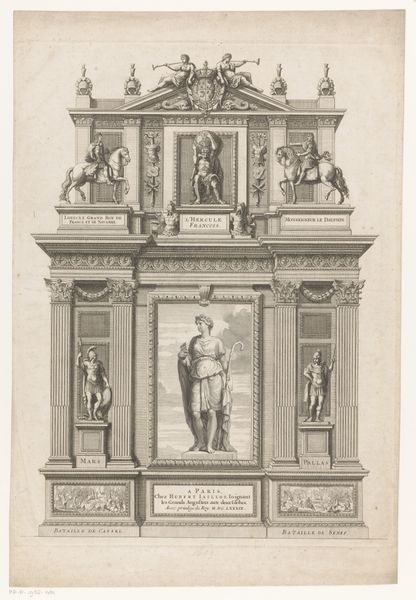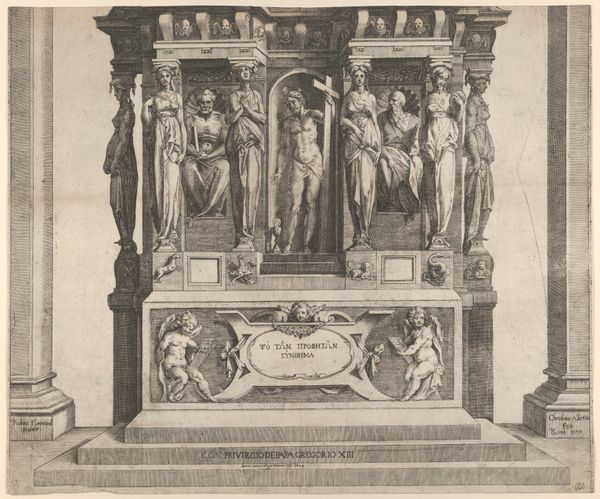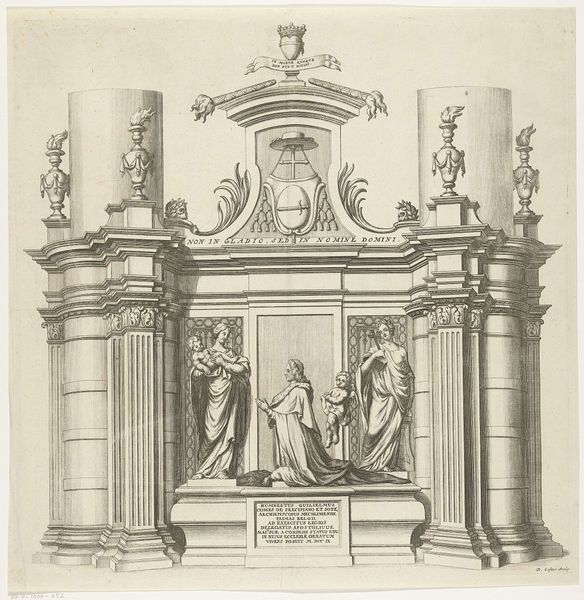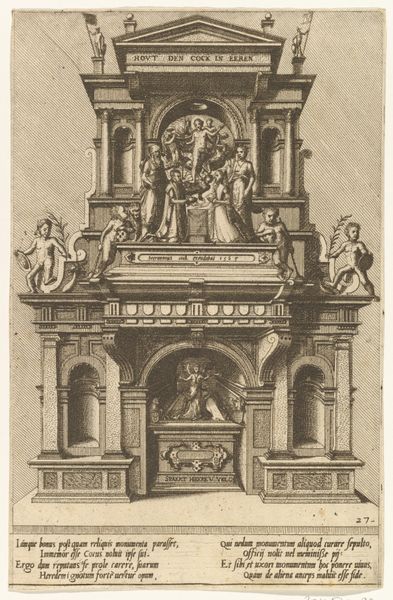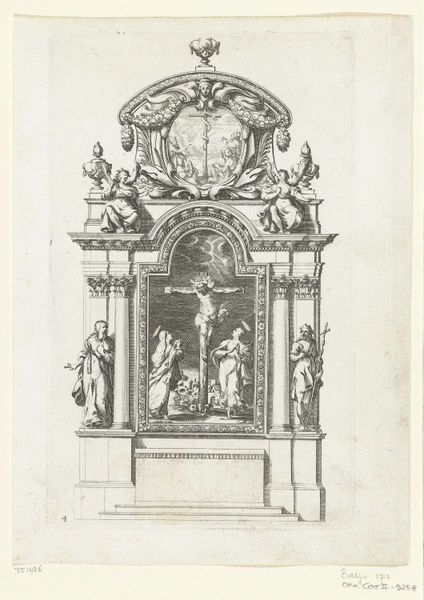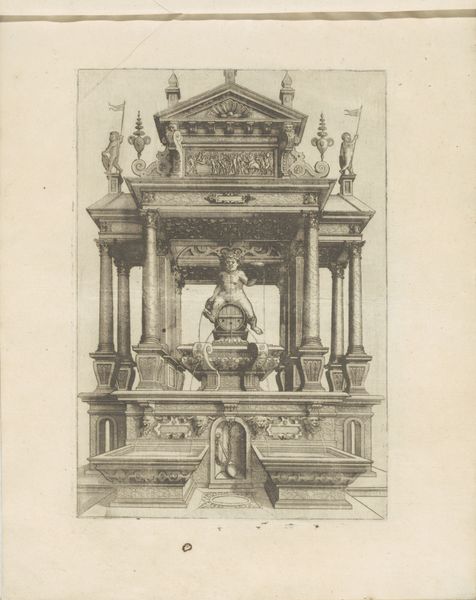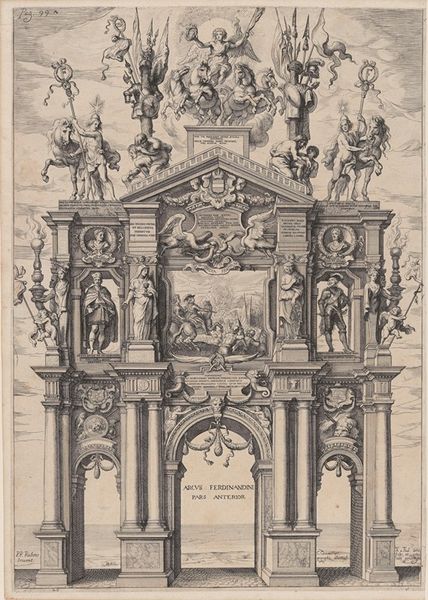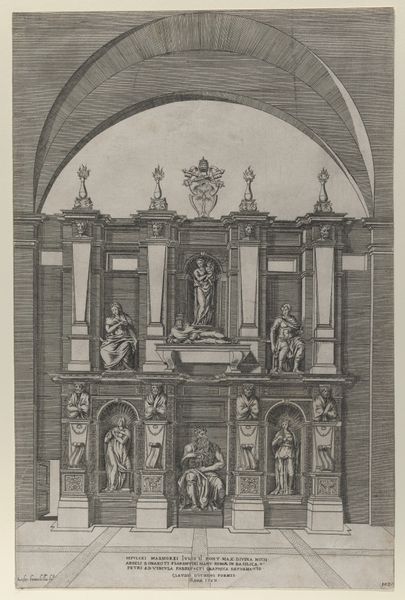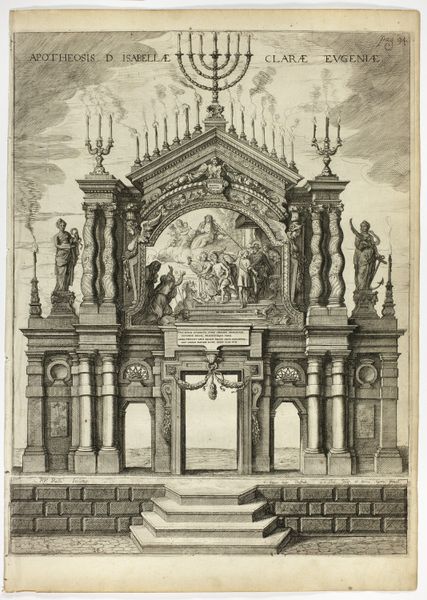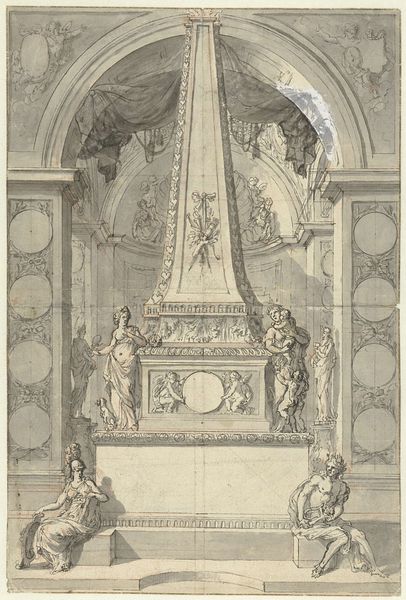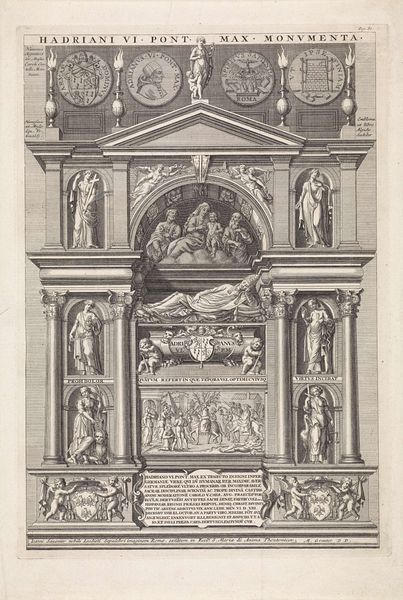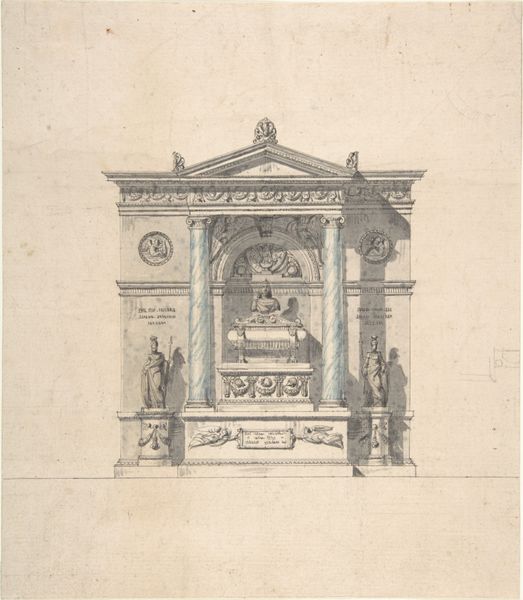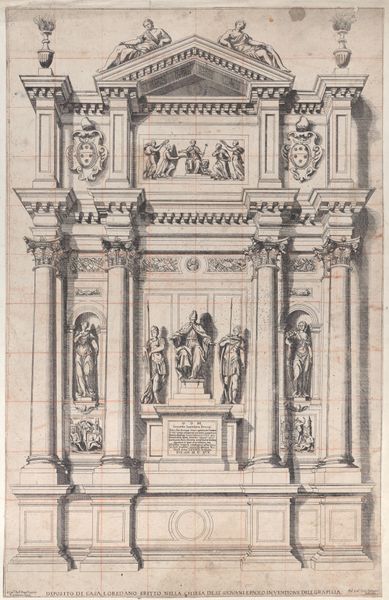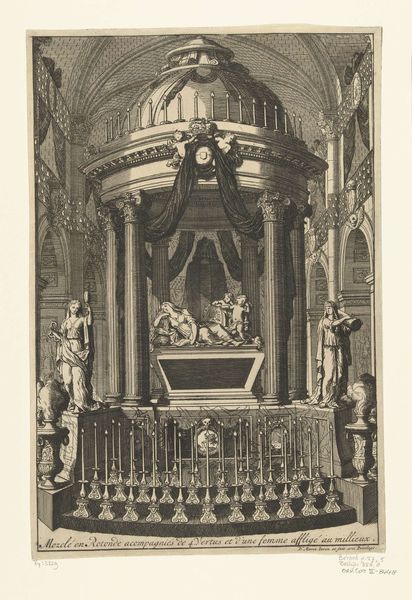
Monument ter aandenking aan het stadhouderschap in de Nederlanden, 1806 1806
0:00
0:00
etching, engraving, architecture
#
portrait
#
historical design
#
neoclacissism
#
statue
#
etching
#
historical fashion
#
19th century
#
line
#
history-painting
#
engraving
#
architecture
Dimensions: height 492 mm, width 412 mm
Copyright: Rijks Museum: Open Domain
Curator: This detailed engraving, created in 1806 by Ludwig Gottlieb Portman, is entitled "Monument ter aandenking aan het stadhouderschap in de Nederlanden," and is currently held in the Rijksmuseum. Editor: Well, my first impression is… wow, that's a lotta history! It looks like someone built a cake for political science! And the frosting? Pure neoclassical ambition! Curator: Absolutely. It’s a potent example of Neoclassicism, a style consciously referencing the art and culture of ancient Greece and Rome, often used to legitimize power through historical allusion. Here, the memorial structure is dedicated to commemorating the Stadtholderate in the Netherlands. Editor: All those stony faces staring out! Gives me the shivers, thinking about all the decisions they made. Kinda makes you want to scribble a thought bubble over their heads, doesn’t it? "Did I leave the oven on?" Curator: It's interesting that you bring up that feeling of unease, or perhaps questioning, because despite its grand design, this work was created during a period of immense political transition and upheaval in the Netherlands. The Stadtholderate itself was abolished not long before this piece was created. So it almost feels like Portman is wrestling with a loss of power through his etching. Editor: You’re right. It’s like shouting “Remember!” in a world that’s trying to move on. All that neoclassical order… I bet underneath they were thinking it’s total chaos. The contrast creates this interesting… ache. Curator: Exactly! By employing the Neoclassical style to construct this memory space, he seems to simultaneously legitimize a past order but also tacitly acknowledge its absence from contemporary social life. It really speaks to the power dynamics that influence art production. Editor: So, in essence, it's a pretty historical power-play presented as cake… Now I'm hungry AND contemplating legacy. Art, you magical trickster! Curator: Precisely! An era immortalized through a very self-aware memorial. Editor: So, what you're saying is that even stone monuments have a little vulnerability, that ache, and that really, is history isn't it? Curator: It truly is. Thank you, that’s a wonderful reflection.
Comments
No comments
Be the first to comment and join the conversation on the ultimate creative platform.
